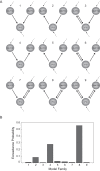Prefrontal connections express individual differences in intrinsic resistance to trading off honesty values against economic benefits
- PMID: 27646044
- PMCID: PMC5028845
- DOI: 10.1038/srep33263
Prefrontal connections express individual differences in intrinsic resistance to trading off honesty values against economic benefits
Abstract
Individuals differ profoundly when they decide whether to tell the truth or to be dishonest, particularly in situations where moral motives clash with economic motives, i.e., when truthfulness comes at a monetary cost. These differences should be expressed in the decision network, particularly in prefrontal cortex. However, the interactions between the core players of the decision network during honesty-related decisions involving trade-offs with economic costs remain poorly understood. To investigate brain connectivity patterns associated with individual differences in responding to economic costs of truthfulness, we used functional magnetic resonance imaging and measured brain activations, while participants made decisions concerning honesty. We found that in participants who valued honesty highly, dorsolateral and dorsomedial parts of prefrontal cortex were more tightly coupled with the inferior frontal cortex when economic costs were high compared to when they were low. Finer-grained analysis revealed that information flow from the inferior frontal cortex to the dorsolateral prefrontal cortex and bidirectional information flow between the inferior frontal cortex and dorsomedial prefrontal cortex was associated with a reduced tendency to trade off honesty for economic benefits. Our findings provide a novel account of the neural circuitry that underlies honest decisions in the face of economic temptations.
Figures




Similar articles
-
The neural basis of dishonest decisions that serve to harm or help the target.Brain Cogn. 2014 Oct;90:41-9. doi: 10.1016/j.bandc.2014.06.005. Epub 2014 Jun 28. Brain Cogn. 2014. PMID: 24983819
-
Increasing honesty in humans with noninvasive brain stimulation.Proc Natl Acad Sci U S A. 2017 Apr 25;114(17):4360-4364. doi: 10.1073/pnas.1614912114. Epub 2017 Apr 10. Proc Natl Acad Sci U S A. 2017. PMID: 28396395 Free PMC article.
-
Cognitive control increases honesty in cheaters but cheating in those who are honest.Proc Natl Acad Sci U S A. 2020 Aug 11;117(32):19080-19091. doi: 10.1073/pnas.2003480117. Epub 2020 Aug 3. Proc Natl Acad Sci U S A. 2020. PMID: 32747572 Free PMC article.
-
When the truth helps and when it hurts: How honesty shapes well-being.Curr Opin Psychol. 2022 Aug;46:101397. doi: 10.1016/j.copsyc.2022.101397. Epub 2022 Jun 17. Curr Opin Psychol. 2022. PMID: 35820222 Review.
-
Honesty as a trait.Curr Opin Psychol. 2022 Oct;47:101418. doi: 10.1016/j.copsyc.2022.101418. Epub 2022 Jul 4. Curr Opin Psychol. 2022. PMID: 35952622 Review.
Cited by
-
Does moral commitment predict resistance to corruption? experimental evidence from a bribery game.PLoS One. 2022 Jan 11;17(1):e0262201. doi: 10.1371/journal.pone.0262201. eCollection 2022. PLoS One. 2022. PMID: 35015764 Free PMC article.
-
Neurocomputational mechanisms underlying immoral decisions benefiting self or others.Soc Cogn Affect Neurosci. 2020 May 11;15(2):135-149. doi: 10.1093/scan/nsaa029. Soc Cogn Affect Neurosci. 2020. PMID: 32163158 Free PMC article.
-
Modulation of financial deprivation on deception and its neural correlates.Exp Brain Res. 2017 Nov;235(11):3271-3277. doi: 10.1007/s00221-017-5052-y. Epub 2017 Aug 1. Exp Brain Res. 2017. PMID: 28765994
-
Prosocial Gains and Losses: Modulations of Human Social Decision-Making by Loss-Gain Context.Front Psychol. 2021 Oct 28;12:755910. doi: 10.3389/fpsyg.2021.755910. eCollection 2021. Front Psychol. 2021. PMID: 34777158 Free PMC article.
-
Neuro-Computational Foundations of Moral Preferences.Soc Cogn Affect Neurosci. 2021 Sep 11;17(3):253-65. doi: 10.1093/scan/nsab100. Online ahead of print. Soc Cogn Affect Neurosci. 2021. PMID: 34508645 Free PMC article.
References
-
- Healy P. M. & Wahlen J. M. A review of the earnings management literature and its implications for standard setting. Accounting Horizons 13, 365–383 (1999).
-
- Gibson R., Tanner C. & Wagner A. Preferences for truthfulness: Heterogeneity among and within individuals. Am. Econ. Rev. 103, 532–548 (2013).
-
- Abe N. How the brain shapes deception: An integrated review of the literature. Neuroscientist 17, 560–574 (2011). - PubMed
-
- Baumgartner T., Fischbacher U., Feierabend A., Lutz K. & Fehr E. The neural circuitry of a broken promise. Neuron 64, 756–770 (2009). - PubMed
Publication types
MeSH terms
LinkOut - more resources
Full Text Sources
Other Literature Sources

